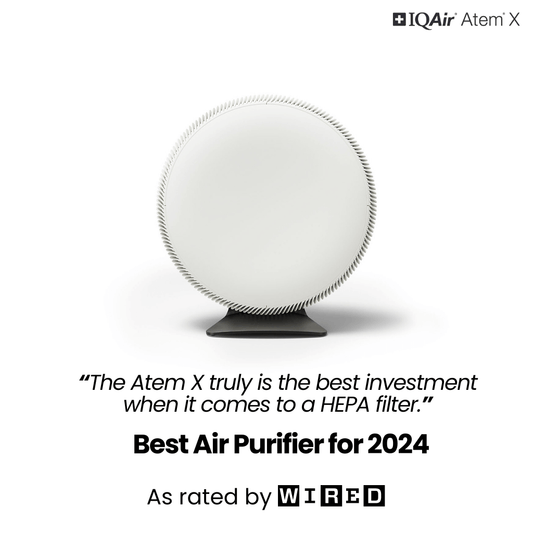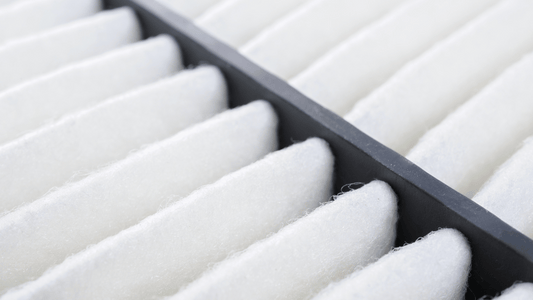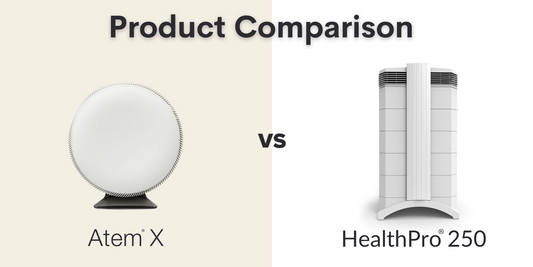Using a mould air purifier, especially if fitted with a leakage-free HEPA filter, is often the only way to continuously remove mould spores from the air. But it is also important to tackle the main cause of mould, which is damp conditions and, if mould has built up, to remove it - either with a bleach-based cleaner, a non-toxic anti-allergen spray such the AllerMold Mould Spray, or if it is really bad, with professional help.
Mould is the name given to small, multi-celled fungi. Mushrooms are also fungi, as are yeasts, which are single-celled fungi. Moulds include the black mould Stachybotrys chartarum which is often mistaken for ordinary household dirt and the dark-coloured Alternaria mould which often lurks in bathrooms and can trigger severe asthma attacks. A recent paper in the Thorax journal reveals that the presence of mould and dampness in the home can lead to a deterioration in lung function. Researchers in Uppsala, Sweden, carried out lung function tests on participants in the European Respiratory Health Survey once between 1990 and 1995 and again nine years later. Dampness (water damage, damp spots) and indoor mould were also assessed and a dampness and mould score assigned to each participant’s home. Dampness and mould were common, affecting around half of all the dwellings. Their presence was associated with a decline in lung function, particularly among women.
The problem with moulds is that they produce spores which are like the seeds of a plant in that they are the means by which the mould reproduces. Mould spores (sometimes also called fungal spores) are very easily carried around your house or office by air currents. The spores have a diameter between one and 100 micrometres (microns - a millionth of a metre). Like other particles, such as the PM10s found in traffic pollution, mould spores can cause a range of respiratory problems if they are inhaled. They are best dealt with by being trapped in a HEPA filter such as the hospital grade filter found in the IQAir HealthPro 250 and HealthPro 150 which removes particles down to 0.003 microns with more than 99% efficiency. We recommend the IQAir air purifiers because they move the right amount of air for an average to a large room (40-440 m3 per hour depending on its speed setting), and each purifier comes with a guarantee that the unit is completely leakage free.
But with moulds, as with any other allergen, it is also important to look at allergen avoidance. Be aware of where, and how, mould patches can develop and be vigilant on preventing this happening. Moulds love damp so you are likely to find them flourishing in the following locations:
- Rooms with a lot of indoor plants (check the conservatory, for instance) because there are invisible moulds on the surface of the soil in the pot
- Cellars and basements, where there is damp air because of limited ventilation
- Farms, holiday cottages
- Unheated rooms, where condensation is more likely
- Buildings near water - lakes, seaside, rivers - because the air is damp
- Old houses
- New houses with insufficient ventilation - where too much emphasis is placed on energy efficiency
- Bedrooms with wardrobes full of old clothes - be especially wary of that mildew smell
Tackling mould involves getting rid of the damp and then getting rid of the mould itself:
- Reduce moisture by getting rid of humidifiers and dealing with any cracks, leaks or rising damp
- Close the kitchen door and/or open a window when you are cooking and consider having an extractor fan in the bathroom
- Dry clothes outside whenever you can
- And do get rid of the carpet in the bathroom
- Don’t be afraid of fresh air! Open the windows and let some air in whenever you can
- Anti-mould sprays, a mixture of white spirit or surgical spirit, or a mixture of bleach and water can be used to remove any mould patches. But take care to read the label on any products and be aware that many of them can also be irritants. For non-toxic and natural cleaning products, check out our line of Allersearch products.



